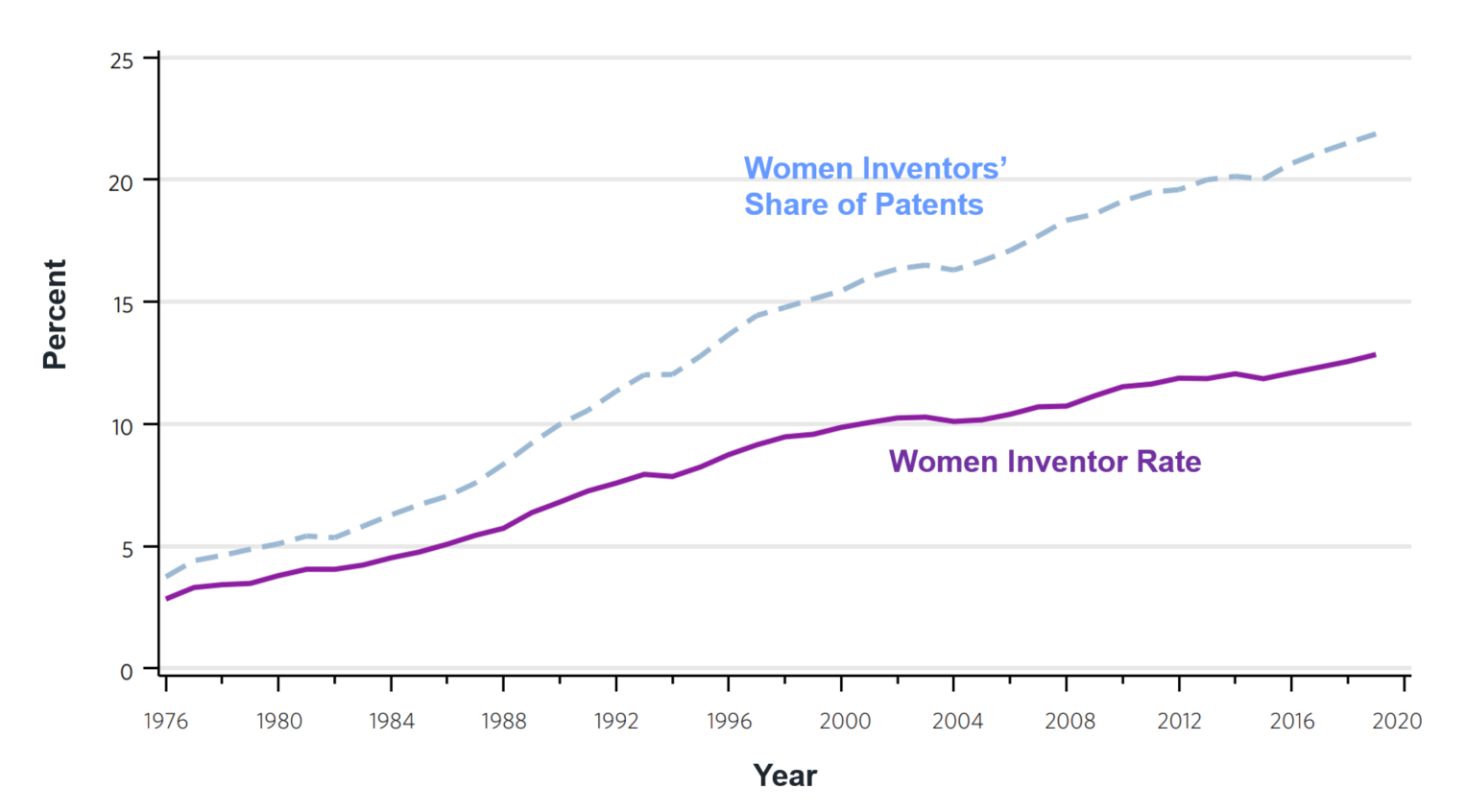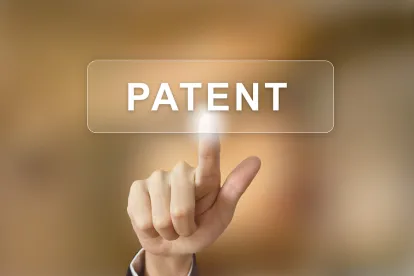The US Patent and Trademark Office (USPTO) has issued an encouraging and informative 2020 Update to its February 2019 Progress and Potential profile of women inventors on US patents. The initial report documented trends in the proportion of patent inventors who are women (the “Women Inventor Rate”) and the proportion of patents that have at least one woman inventor (their “Share of Patents”) through 2016. The Update shows only slight increases in both of these metrics over the last three years, but the increases are seen for almost all companies that file large numbers of patents and almost all the states in the nation. The Update also indicates that more and more women are among inventors being granted their first patent, and such women are almost as likely as men to obtain further patents. As explained below, the Update thus demonstrates that our efforts to involve women inventors in the patent process can and will bring about the sorely needed improvement in their participation.
According to the USPTO’s initial report, the Women Inventor Rate increased from about 8% in 1995 to 12% in 2016, but remained lower than the proportion of science and engineering jobs held by women—indicating that these low inventor rates are not merely the result of gender-based discrepancies in STEM education or employment. See our prior post here.
As noted in the Update, the Women Inventor Rate increased by just 0.7% from 2016 to 2019. It was 12.8% at the end of 2019. Over the same period, the share of patents with at least one woman inventor increased by just 1.2%, up to 21.9%. These trends are continuations of slow but steady increases in the participation of women inventors in patenting since the 1970s, when both rates were below 5%. This is shown in Figure 1 of the Update, provided below in annotated form.

While there is now at least one woman on 22% of US patents, and about 13% of all inventors on US patents are women, these numbers are lower than similar measures for foreign patents. See WIPO’s report. They are also lower than a variety of measures of women’s potential, as acknowledged in the USPTO’s Update:
[A] [Women Inventor Rate] of 12.8% is substantially lower than other benchmarks of women’s education and employment as scientists and engineers. . . . These data suggest that expanding the pipeline through education and science and engineering jobs, while necessary, is not sufficient to increase the participation of women as inventor-patentees.
There are many things that companies can do to help increase participation of women inventors in patenting. In a Statement made to a Senate IP committee, Sandra Nowak, IP Counsel for 3M, described a variety of actions taken at 3M to increase participation. As reflected in the Update, 3M had the largest increase in a long-term measure of Women Inventor Rate (going back to 2007) when data from 2016-2019 was added into the calculation – increasing 1.4% to 15.2%. The Intellectual Property Owners Association (IPO.org) has developed a Gender Diversity in Innovation Toolkit that can help companies take the actions necessary to effect such change.
There is room for improvement. For the 29 companies that own the largest number of patents, 63% of them had Women Inventor Rates below the overall average. Similarly, for 51 states in the U.S. plus the District of Columbia, 80% of them had Women Inventor Rates below the overall average. Nonetheless, all but 2 of the companies and all but 4 states showed some improvement in this measure of their Women Inventor Rate from 2016 to 2019. The consistency in improvement across companies and the states is encouraging, even though the actual rates may be low.
There are also signs that the slow but steady increase of women inventors in patenting will continue, and perhaps even quicken. As noted in the Update,
“Bringing new women into the patent system is one of the most important channels for expanding women’s participation as inventor-patentees.”
In this regard, the Update reports higher rates of increase in new women inventors than for men. From 2014 to 2019, the number of new men-inventor-patentees grew at 2.4% per year, while the number of new women-inventor-patentees grew at 4% per year—almost twice the rate of men. And for both men and women, new inventor-patentees are very likely to be inventors on additional patents. As of 2014, about 52% of new men inventor-patentees remained active, while about 46% of new women inventor-patentees remained active.
Overall, the Update should be a call to action. It is a reminder that women’s participation as inventors in the patent system falls far short of their potential. At the same time, the Update indicates that women are entering the patent system as inventors at a faster rate than men, and almost as likely as men inventors to stay active in the system. The Update thus shows that including women inventors in patenting activity, especially those that have not been involved before, can and will bring about continued progress.




 />i
/>i

